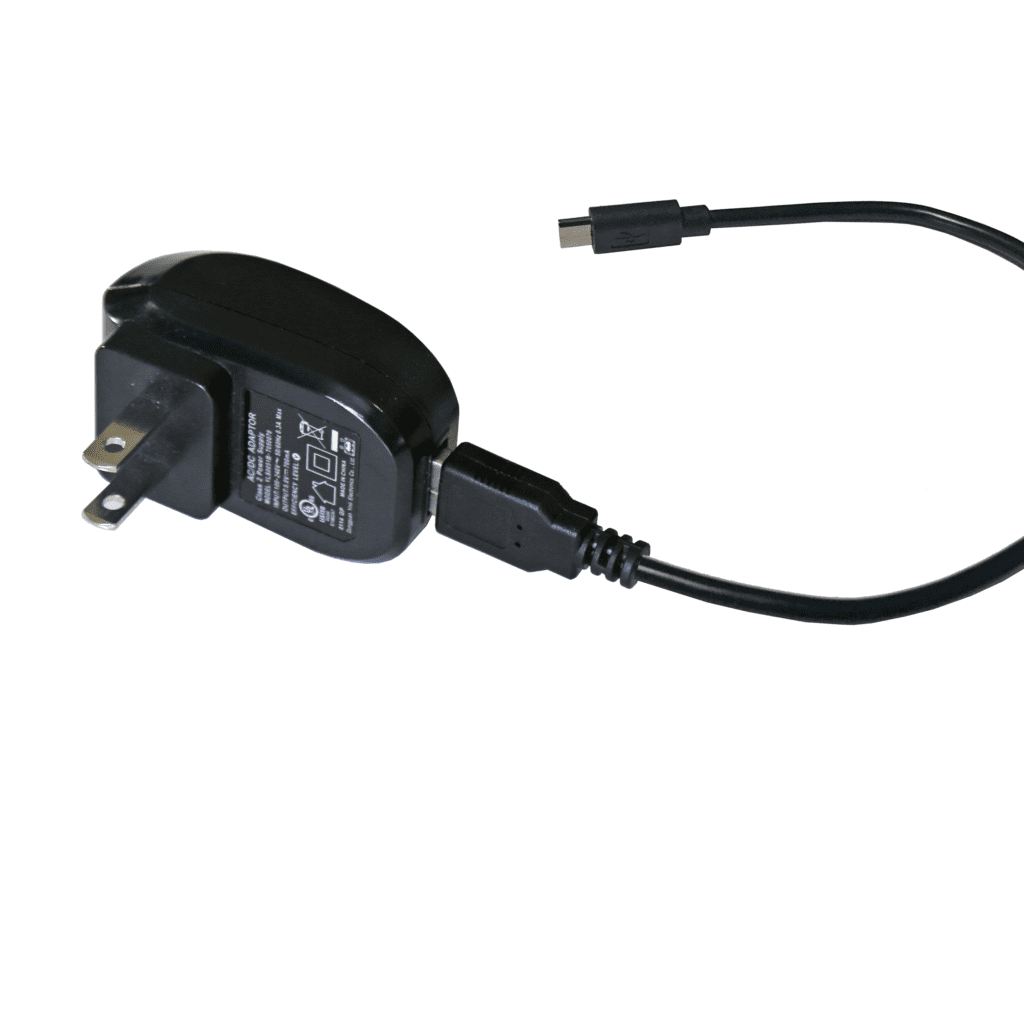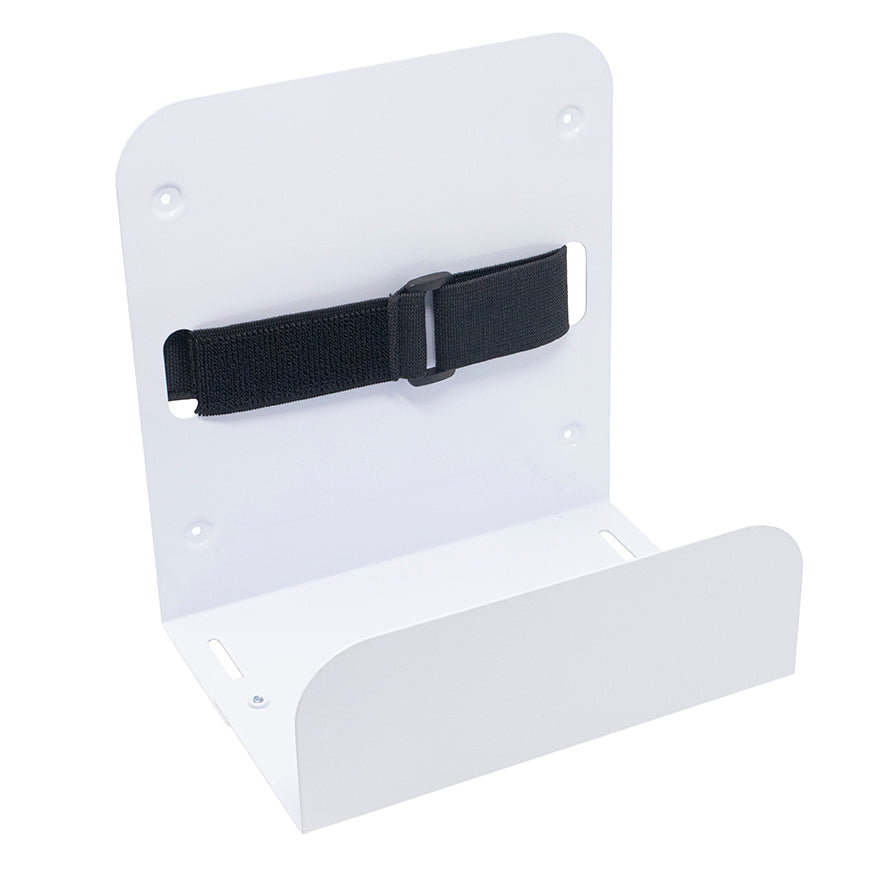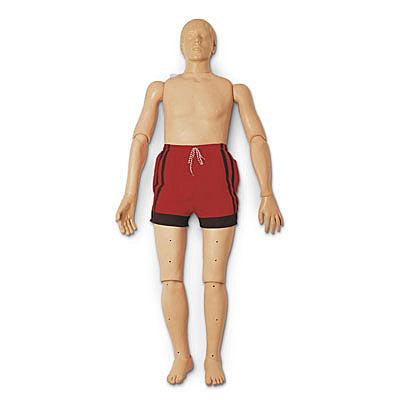Questions fréquemment posées
Qu’est-ce qu’un arrêt cardiaque soudain ?
Un arrêt cardiaque soudain (ACS) signifie simplement que le cœur cesse de battre de manière inattendue et brusque. Ceci est généralement causé par un rythme cardiaque anormal appelé fibrillation ventriculaire (FV).
Le SCA est-il la même chose qu’une crise cardiaque ?
Non. Une crise cardiaque est une condition dans laquelle l’apport sanguin au muscle cardiaque est soudainement bloqué, entraînant la mort du muscle cardiaque. Les victimes de crise cardiaque ressentent généralement (mais pas toujours) des douleurs thoraciques et restent généralement conscientes. Les crises cardiaques sont graves et conduisent parfois à un SCA. Cependant, le SCA peut survenir indépendamment d’une crise cardiaque et sans signes avant-coureurs. Le SCA entraîne la mort s’il n’est pas traité immédiatement.
Qui est à risque de SCA ?
Bien que l’âge moyen des victimes de l’ACS soit d’environ 65 ans, l’ACS est imprévisible et peut frapper n’importe qui, n’importe où et n’importe quand.
Qu’est-ce que la VF ?
La FV est un rythme cardiaque anormal souvent observé en cas d'ACS. Ce rythme est provoqué par une activité électrique anormale et très rapide du cœur. VF est chaotique et désorganisé ; le cœur tremble et ne peut pas pomper efficacement le sang. La FV sera de courte durée et se détériorera jusqu'à l'asystolie (une ligne plate) si elle n'est pas traitée rapidement.
Comment traite-t-on la FV ?
Le seul traitement efficace contre la FV est un choc électrique appelé défibrillation. La défibrillation est un courant électrique appliqué à la poitrine. Le courant électrique traverse le cœur dans le but d'arrêter la FV et de permettre au système électrique normal du cœur de prendre le contrôle. Ce courant aide le cœur à réorganiser l’activité électrique afin qu’il puisse à nouveau pomper le sang. Un défibrillateur externe automatisé (DEA) peut défibriller le cœur.
Qu'est-ce qu'un DEA ?
Un DAE est un appareil qui analyse et recherche les rythmes cardiaques pouvant être soumis à un choc, informe le secouriste de la nécessité d'une défibrillation et délivre un choc si nécessaire.
Vais-je blesser la victime en utilisant un DEA ?
Lorsqu’il est utilisé sur des personnes inconscientes et qui ne respirent pas, le DAE est extrêmement sûr. Le DAE prend des décisions en matière d'administration de chocs en fonction du rythme cardiaque de la victime et ne défibrillera qu'un rythme pouvant faire l'objet d'un choc.
Que faire si j'oublie les étapes d'utilisation d'un DAE ?
Les étapes pour choquer une victime SCA sont simples et directes. L'AED Plus® fournit les invites visuelles et audio nécessaires à l'ensemble du processus de réanimation. Le plus difficile est de reconnaître la nécessité d’une défibrillation.
Dois-je d’abord effectuer la RCR ou appliquer les électrodes du DAE ?
Effectuez la RCR uniquement jusqu’à l’arrivée du DAE. Appliquez les électrodes sur la poitrine nue de la victime et suivez les invites vocales et les messages du DAE. Il vous dira quand reprendre la RCR.
Si la défibrillation est si importante, pourquoi devrais-je pratiquer la RCR ?
La RCR assure une certaine circulation de sang riche en oxygène vers le cœur et le cerveau de la victime. Cette circulation retarde à la fois la mort cérébrale et la mort du muscle cardiaque. La RCR rend également le cœur plus susceptible de répondre à la défibrillation.
Puis-je être poursuivi en justice en utilisant un DAE ?
À ce jour, il n’y a jamais eu de cas où quelqu’un ait été tenu responsable pour avoir utilisé un DAE, mais comme vous le savez, n’importe qui peut être poursuivi en justice. De même, la plupart des États ont adopté une législation du « Bon Samaritain » protégeant le sauveteur non professionnel des poursuites judiciaires.
Puis-je accidentellement électrocuter un autre sauveteur ou moi-même ?
Les DAE sont extrêmement sûrs lorsqu’ils sont utilisés correctement. Le choc électrique est programmé pour passer d’une électrode à l’autre en passant par la poitrine de la victime. Des précautions de base, comme avertir verbalement les autres de se tenir à l'écart et vérifier visuellement la zone avant et pendant le choc, garantiront pratiquement la sécurité des sauveteurs.
Que se passe-t-il si la victime porte un patch médicamenteux ou des électrodes ECG sur la poitrine, à l'endroit où je souhaite placer les électrodes ?
Ne placez jamais les électrodes du DAE directement sur des patchs de médicaments, tels que des patchs de nitroglycérine ou d'ECG. Les patchs doivent toujours être retirés et la peau essuyée avant de placer les électrodes sur la peau.
Dois-je retirer les électrodes avant de pratiquer la RCP ?
Les électrodes restent en place tout au long de la réanimation et jusqu'à ce que la victime soit transférée vers des prestataires de soins avancés tels que les ambulanciers. Si les électrodes sont correctement positionnées sur la poitrine de la victime, elles n'interféreront pas avec le placement correct des mains ou les compressions.
Les électrodes restent en place tout au long de la réanimation et jusqu'à ce que la victime soit transférée vers des prestataires de soins avancés tels que les ambulanciers. Si les électrodes sont correctement positionnées sur la poitrine de la victime, elles n'interféreront pas avec le placement correct des mains ou les compressions.
Dois-je utiliser le DAE si la victime porte un stimulateur cardiaque ou est enceinte ?
Oui, ne refusez jamais l’utilisation du DAE chez une personne atteinte de SCA.
Puis-je défibriller sur une surface humide ?
Oui, à condition de respecter les règles de sécurité habituelles. Assurez-vous que la poitrine de la victime est essuyée. Gardez les électrodes éloignées de toute surface humide ou conductrice.
Puis-je défibriller sur ou à proximité d’une surface métallique ?
Oui, à condition de respecter les règles de sécurité habituelles. Gardez les électrodes loin de tout contact avec la surface conductrice. Assurez-vous de ne permettre à personne de toucher la victime lorsqu'un choc est délivré.
Quelle partie des vêtements de la victime doit-elle être retirée pour procéder à une défibrillation ?
La poitrine doit être exposée pour permettre la mise en place des électrodes jetables. Le soutien-gorge d'une femme doit être retiré. Les vêtements devront peut-être être coupés.
Pourquoi est-il si important de s’assurer que les électrodes adhèrent fermement à une poitrine propre et sèche ?
Une défibrillation réussie nécessite que l’électricité circule d’une électrode à l’autre à travers la poitrine. Si les électrodes ne sont pas fermement collées et qu'il y a de la sueur ou un autre matériau conducteur entre les électrodes, l'électricité sera plus susceptible de traverser la poitrine plutôt que de la traverser. Cela entraînerait une défibrillation inefficace et un risque accru d'étincelles et d'incendie.
Est-il acceptable de placer les électrodes directement sur une poitrine poilue ?
Les électrodes doivent entrer en contact direct avec la peau. Si les poils sur la poitrine sont si nombreux qu’ils empêchent une bonne adhérence de l’électrode, ils doivent être épilés rapidement.
Et si j'ai un enfant victime ?
Vous devez utiliser des électrodes pédiatriques, qui transportent une charge moindre pour l'enfant en SCA.
Après avoir réussi la défibrillation de la victime, dois-je garder les électrodes en place ?
Oui, même après une défibrillation réussie, une victime risque de développer à nouveau une FV. Le DEA surveillera en permanence la victime pour détecter le retour de la FV. Si une FV est suspectée, le DAE commencera automatiquement à analyser la victime après deux minutes de RCP. Le DEA doit rester allumé jusqu'à ce que le personnel d'urgence prenne en charge la victime.
Que se passe-t-il si la victime reprend son pouls mais ne respire pas ou respire lentement ?
Vous devez administrer des insufflations à raison de 1 toutes les 5 secondes ou 12 par minute.
J'ai utilisé un DEA sur une victime de SCA et le DEA indiquait toujours « Aucun choc conseillé ». Même avec la RCR, la victime n'a pas survécu. Pourquoi le DEA n'a-t-il pas électrocuté cette victime ?
Bien que la FV soit le rythme le plus courant lors d’un arrêt cardiaque, ce n’est pas le seul. Le DAE ne choquera que la FV ou la TV (tachycardie ventriculaire), qui correspondent à un rythme cardiaque très faible mais rapide. Il existe d'autres rythmes cardiaques associés au SCA qui ne sont pas traités par des chocs de défibrillation. Un message « pas de choc conseillé » ne signifie pas que le rythme cardiaque de la victime est revenu à la normale.
J'ai électrocuté une femme en SCA quelques minutes après son effondrement. J'apprends plus tard qu'elle n'a pas survécu. Est-ce que j'ai fait quelque chose de mal?
Malheureusement, en raison d'autres problèmes médicaux ou cardiaques sous-jacents, toutes les victimes d'ACS en FV ne survivront pas même si la défibrillation est effectuée rapidement et correctement.
Que se passe-t-il si je n’effectue pas parfaitement toutes les étapes de RCP et de défibrillation ?
SCA est une situation de stress élevé. Même les prestataires de soins de santé expérimentés ne font pas tout parfaitement. En SCA, la RCR et l’utilisation d’un DEA ne peuvent qu’aider la victime.
Que faire si je ne suis pas sûr de devoir ou non utiliser un DAE ?
N'oubliez pas cette règle : n'utilisez un DAE que sur une personne sur laquelle vous effectueriez une RCR – qui ne répond pas et ne respire pas.
Comment puis-je surveiller mon DAE ?
Que vous dirigiez une grande organisation avec des centaines de DAE ou un petit bureau à domicile avec un seul DAE, le suivi et la maintenance maintiennent votre ou vos DAE prêts à être secourus.
Avec AED4Life et TrackMyAED, c'est aussi simple que 1-2-3.
Comment TrackMyAED Plus peut-il garder mes DAE prêts à être secourus ?
Notre système de surveillance basé sur le Web, facile à gérer, vous fournit un statut à jour et en temps réel de tous vos DAE. Suivre les inspections mensuelles et vous tenir informé de toute expiration des électrodes et des batteries. De plus, le système suivra et gérera le statut de formation de votre personnel formé.
Insérer votre (vos) DAE dans le système est simple et rapide. Une fois votre DAE saisi, les utilisateurs ont la possibilité d'ajouter et de modifier toutes les données, d'afficher des informations importantes sur le DAE, de suivre le personnel formé et de télécharger des rapports détaillés.
Trackmyaed.ca est un logiciel GRATUIT. Si vous n'avez pas acheté votre DAE chez nous, nous pouvons vous aider à gérer le programme DAE de votre organisation. Veuillez contacter notre sympathique représentant du service client pour vous aider à démarrer.
Quelles sont les principales fonctionnalités de TrackMyAED ?
- Toutes les informations sur le DAE sont stockées au même endroit, facilement accessible partout où vous le souhaitez.
- Des notifications par e-mail vous permettent de savoir quand votre appareil a besoin d'attention et des listes de contrôle pour garantir que votre appareil est à jour et prêt à être secouru.
- Rapports téléchargeables pour vous aider à gérer plusieurs équipements
- Suivez les qualifications et configurez les notifications de formation, gérez les personnes qui s'occupent de votre équipement.
- Liens vers des formations adaptées à votre équipement spécifique.
- Facile à gérer et à ajouter vos unités AED et les personnes impliquées dans l'entretien de vos AED.
- Votre tableau de bord vous montre en un coup d'œil ce que vous devez savoir.
- Gérez les emplacements et le placement des appareils. (Vue de la carte)
Visitez TrackMyAED pour une visite GRATUITE
Pour plus d'informations sur la façon dont nous pouvons vous aider à mettre en œuvre un programme DEA dans votre organisation ou communauté, ou sur la façon dont vous pouvez saisir votre DEA dans notre logiciel, n'hésitez pas à nous contacter à tout moment.
Pourquoi les électrodes du DAE expirent-elles ?
Si vous gérez un programme de défibrillateur externe automatisé (DEA), vous savez que les électrodes ont une date d'expiration.
Les électrodes du DAE doivent-elles entrer en contact avec la peau ?
Pour qu'un DAE fournisse le bon type de thérapie à une victime d'un arrêt cardiaque soudain (ACS), les électrodes du DAE doivent être en contact approprié avec la peau du patient. Avec un bon contact, le DAE est capable d'analyser correctement le rythme cardiaque du patient et de déterminer si le patient est en arrêt cardiaque soudain ou non. De plus, un contact approprié avec les électrodes du DAE est nécessaire pour que le DAE puisse délivrer une thérapie de choc salvatrice.
À quoi sert le gel pour l’adhésion des électrodes du DAE ?
Pour aider les électrodes du DAE à adhérer correctement à la peau, un gel est appliqué sur les électrodes lors de leur fabrication. En s'infiltrant dans les pores de la peau, le gel agit comme un agent de liaison entre la victime et les électrodes du DAE. Cependant, avec le temps, le gel commence à sécher et sa composition chimique se décompose. Si les électrodes du DAE sont utilisées au-delà de leur date de péremption, elles n’adhéreront pas non plus à la peau, en particulier lors d’une réanimation cardio-pulmonaire (RCR). Pendant les compressions de RCP, les électrodes du DAE ayant une mauvaise adhérence peuvent se détacher de la peau, réduisant ainsi les chances que le DAE fournisse une analyse et une thérapie efficaces.
Que se passe-t-il lorsque les électrodes du DAE expirent ?
Au fil du temps, une dégradation chimique du gel contenu dans les électrodes du défibrillateur se produira. Les fabricants d'électrodes du DAE ne peuvent pas garantir que les électrodes auront suffisamment d'adhérence pour fonctionner correctement après un certain temps. (Date d'expiration) Par conséquent, les électrodes ont une date d'expiration pour garantir que les patients victimes d'un arrêt cardiaque soudain ont les meilleures chances de survie possibles. La durée de vie typique des électrodes du DAE se situe entre 18 et 60 mois. (En fonction des spécifications du fabricant. Par conséquent, il est essentiel d'effectuer une maintenance de routine et des contrôles d'approvisionnement de toutes vos unités DAE pour garantir que votre programme DAE est conforme.
Et les accessoires ?
Inspectez régulièrement votre DAE pour vérifier son état de préparation et son intégrité. Les électrodes et les batteries expireront avec le temps. Veuillez vous assurer de connaître vos dates et d'être préparé des semaines à l'avance pour permettre la livraison des nouveaux accessoires.
Comment déclarer un sinistre ?
Suivez les recommandations du fabricant pour tous les contrôles de maintenance programmés du défibrillateur. Signalez immédiatement tout problème de performance, défaut de l'appareil ou accessoire manquant, expiré et/ou endommagé au coordinateur du programme DAE.
Les DAE doivent-ils être calibrés ?
L'AED ne nécessite aucun étalonnage ni vérification de la fourniture d'énergie. Le DAE ne comporte aucune pièce réparable par l’utilisateur. Le DAE effectue régulièrement des autotests pour s'assurer qu'il est prêt à l'emploi. Bien que l'entretien requis pour le DAE soit minime, il est important qu'une vérification régulière du DAE soit effectuée pour garantir son état de préparation, comme décrit dans les instructions d'utilisation du DAE.
Quel est le calendrier d’entretien suggéré ?
Reportez-vous au calendrier de maintenance suggéré dans le mode d'emploi du DAE, qui fournit également des instructions détaillées pour répondre à chaque tâche de maintenance.
Comment nettoyer mon DAE ?
Si nécessaire, nettoyez le DAE à l’aide des produits de nettoyage recommandés, conformément au DAE et aux instructions d’utilisation du fabricant.
Durée de vie de la batterie du DAE : Quand faut-il remplacer la batterie du DAE ?
La durée de vie d'une batterie peut varier selon le fabricant ; la plupart devront être remplacés tous les 2 à 5 ans. Il est essentiel de savoir si la date de remplacement de la batterie de votre DAE approche afin de pouvoir disposer d'une nouvelle batterie avant son expiration.
- Comment savoir si votre batterie entre dans la catégorie 2 ans ou 5 ans ? Lisez la suite pour déchiffrer les dates imprimées sur la batterie de votre DAE afin de déterminer la durée de vie restante de la batterie. REMARQUE : Les piles ZOLL Duracell ont une date limite d'utilisation sur chaque pile du ZOLL AED Plus. Il ne s'agit pas de la date d'expiration si les piles sont déjà installées dans l'unité DAE. S'il vous plait, contactez nous pour plus d'informations.
- Vous savez déjà que vous avez besoin de remplacer la batterie d'un DAE ? Veuillez vous rendre sur www.aedshop.ca pour commander la batterie appropriée pour votre appareil.
Dates de remplacement de la batterie du DAE (échantillons)


Une ou plusieurs dates peuvent être inscrites sur la batterie de votre DAE et, dans certains cas, cela peut prêter à confusion. Afin de vous assurer que vos fournitures sont à jour et que votre DAE est prêt à être secouru, il est important de comprendre la signification de la date sur votre batterie.
Il existe trois types de dates couramment utilisés sur une batterie :
- Date de fabrication
- Date d'installation (durée de conservation)
- Date d'expiration.
Date de fabrication : Cela représente la date à laquelle la batterie a été produite. Ce n'est PAS une date d'expiration. Veuillez noter que certaines batteries nécessitent une utilisation dans les 5 à 7 ans suivant leur production.
Date d'installation : Cette date représente la durée de conservation d'une batterie.
(La date d'installation n'est PAS une date d'expiration)
Pour assurer la durée de vie garantie d’une batterie, il faut installer une batterie de remplacement du DAE au plus tard à cette date. La durée de vie des batteries varie entre 2 et 7 ans, selon le fabricant et le modèle. La date d'expiration sera comptée à partir de la date à laquelle la batterie a été installée dans votre appareil.
Date d'expiration : Si une date d'expiration est affichée, vous devez installer les piles de remplacement du DAE au plus tard à cette date imprimée. Cela vous indiquera combien de temps il reste à la durée de vie de la batterie de votre DAE.
Conseils sur la batterie de remplacement du DAE
- Suivez la date - Si la batterie de votre DAE utilise une « Date d'installation avant » ou une « Date de fabrication », marquez la date à laquelle vous avez installé la batterie sur la batterie elle-même ou notez-la dans vos dossiers.
- Vérifications de routine - Vérifiez régulièrement votre appareil DAE selon les recommandations du fabricant. Cela permettra de garantir que l'appareil est « prêt pour le sauvetage » et que tous les produits jetables sont à jour et installés correctement.
- Recycler – La plupart des batteries des DAE sont à base de lithium et doivent être recyclées. Les piles au lithium ne doivent jamais être jetées à la poubelle.
- Remplacer : visitez notre page Piles AED pour magasiner par marque afin de trouver les piles de remplacement adaptées à votre appareil DAE.












